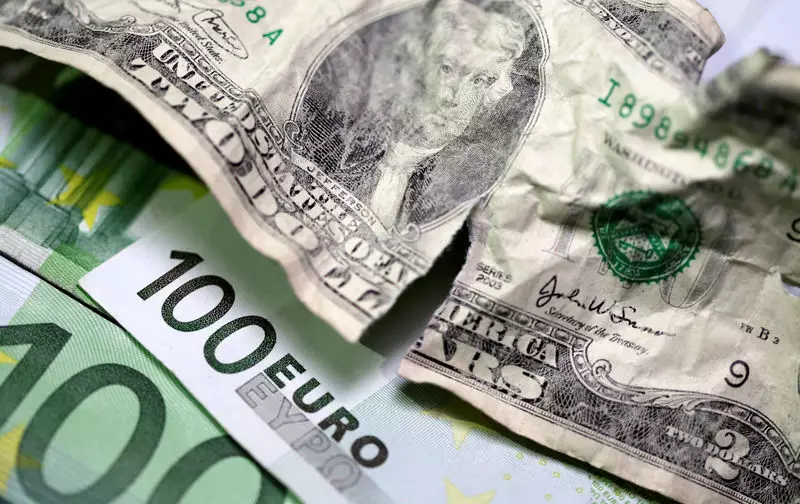In the world of finance and economics, currency values are a vital indicator of broader economic health and sentiment. Over the past week, notable fluctuations in the US dollar, euro, and several other major currencies have reflected changing investor perceptions spurred by economic data and central bank stances. In this article, we will dissect the recent movements of these currencies, exploring the underlying influences that have led to their recent behaviors.
The US dollar exhibited a slight rise on Monday, recovering from significant declines observed at the end of the previous week when it faced pressure following poor inflation metrics. This resurgence can be attributed to signals of moderating inflation, which offered a glimmer of hope amidst widespread concerns. The Dollar Index, which tracks its value against six other major currencies, rose by 0.4% to approximately 107.750. Analysts noted that this upward movement came on the heels of a drop from a two-year high, highlighting the dollar’s volatility influenced by events tied to the Federal Reserve’s monetary policy outlook.
The Federal Reserve’s latest economic indicators suggest a more stable inflation environment, fostering a sense of caution about future interest rate cuts. The market appears to be recalibrating its expectations, currently anticipating about 38 basis points in rate cuts next year—a figure that falls short of the two cuts (25 basis points each) the Fed outlined in its policy forecast.
Conversely, the euro faced headwinds, recently slipping following the comments made by European Central Bank (ECB) President Christine Lagarde. Lagarde’s assertion that the eurozone is nearing its medium-term inflation target of 2% raises concerns among traders. The euro traded at 1.0414 against the dollar, flirting with its two-year lows, reflecting a year-to-date decline of around 5.5%. Lagarde remarked that while inflation metrics seem promising, any decision to cut interest rates further hinges on sustained progress towards the inflation targets set by the ECB.
Earlier in December, Lagarde had hinted that if the trend of easing inflation continues, there may be no necessity to maintain high interest rates in the eurozone. The recent downward adjustment of interest rates also reflects the ECB’s willingness to navigate a cautious path amid faltering growth prospects.
Across the English Channel, the British pound remained relatively stable against the dollar, trading at around 1.2571. However, dismal economic reports indicating zero growth for the UK’s economy in the third quarter have heightened concerns regarding an impending economic slowdown. The Office for National Statistics revealed a downward revision of GDP growth for both the second and third quarters, which led to a divided internal debate among Bank of England policymakers regarding interest rates.
The Bank of England’s decision to hold rates steady, with a notable 6-3 voting split, suggests a delicate balancing act as officials mitigate the risk of further economic slowdown while weighing the implications of external pressures and domestic recovery.
In Asia, the Japanese yen experienced a slight depreciation as USD/JPY rose by 0.2% to approximately 156.72. The Bank of Japan (BOJ) has projected that it will maintain its accommodative stance amid recent inflationary pressures, with interest rate hikes unlikely until at least March 2025. This cautious approach reflects broader concerns about Japan’s economic trajectory, impacting its currency valuation.
Meanwhile, the Chinese yuan has also faced pressures, with USD/CNY advancing by 0.2% to reach levels not seen in a year. Economic uncertainties in China continue to burden currency traders, who are eyeing fiscal spending measures by Beijing as potential lifelines, while the likelihood of looser monetary conditions casts a shadow over the yuan’s prospects.
As global economies prepare to navigate the holiday season, trading volumes are expected to thin, potentially amplifying volatility in currency markets. Economic data and central bank communications will remain focal points for traders, influencing expectations and investment strategies heading into the new year. The interplay between economic indicators, central bank policies, and geopolitical dynamics will certainly shape currency movements, making it imperative for investors to stay attuned to these critical developments.

